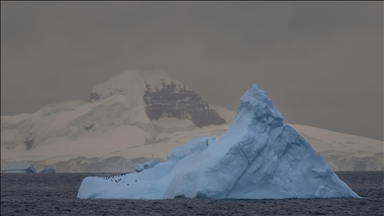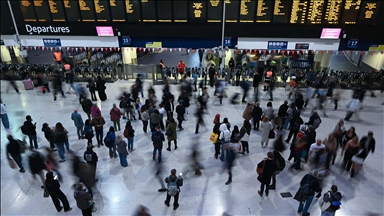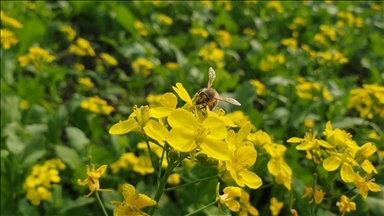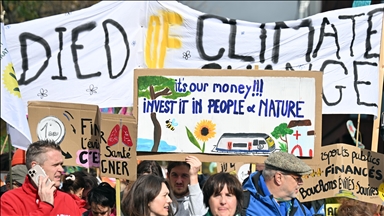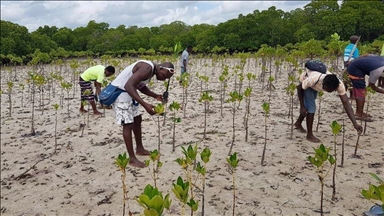Nearly half of World Heritage sites face climate threats, warns nature conservation group
117 out of 271 heritage areas are at high or very high risk; International Union for Conservation of Nature stresses the need for urgent and stronger climate action
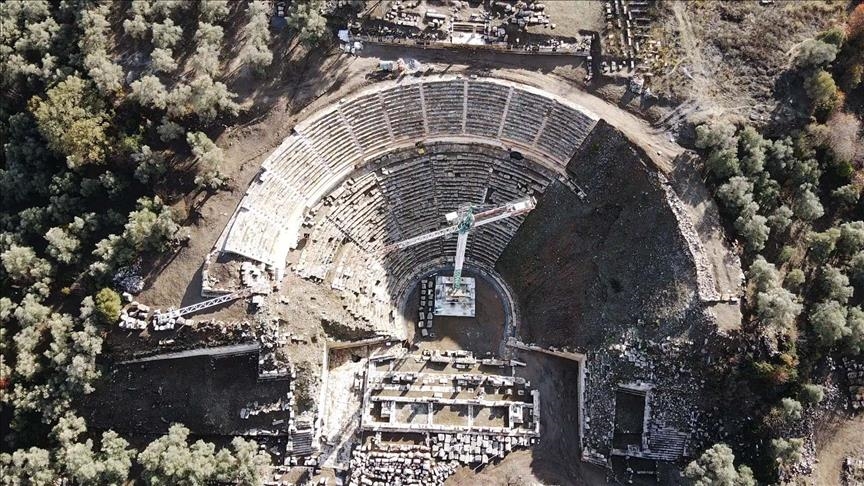
ISTANBUL / ANKARA
Nearly half of the world’s natural and cultural World Heritage sites are now at high or very high risk due to climate change, according to the International Union for Conservation of Nature (IUCN)’s recent World Heritage Outlook 4 report, which calls for stronger global climate action to protect these irreplaceable ecosystems.
The report evaluated 271 sites designated by UNESCO for their natural and cultural significance and found that 117, or about 43%, face “high” or “very high” levels of threat from climate change.
The figure represents a sharp increase compared to 2020, when 33% of sites were under such risk, and 2017, when the rate stood at 27%.
According to IUCN, climate change remains not only the greatest danger to heritage sites but also the fastest-rising one.
Between 2020 and 2025 alone, the number of sites under severe threat from climate impacts grew by 31.
Tim Badman, director of the IUCN's World Heritage and Culture Programme, told Anadolu that the report's ratings serve as a projection of each site's conservation outlook, and the increase in affected areas over the last decade suggests an urgent need for greater climate action.
He noted that changes in seasonal flooding patterns are already altering hydrology and ecosystems, marine heatwaves are leading to coral bleaching, and rising sea levels are transforming sedimentation and salinity dynamics.
Melting glaciers, he said, are changing water flows and increasing the risk of landslides, while shifting rainfall patterns are causing desertification in some regions and flooding in others.
The report found that sites hosting significant biodiversity are suffering the greatest losses.
In 2014, 71% of these areas were categorized as being in good or low-risk condition, compared to only 52% in 2025, which is the lowest level recorded so far.
The overall conservation outlook also continues to deteriorate.
In 2014, 63% of sites had a positive outlook, while the latest assessment shows a decline to 57%.
IUCN warned that this represents a major setback in global biodiversity protection.
Invasive species, diseases pose second-most serious global threat
The report said invasive species and diseases are emerging as the second most serious global threats.
The number of sites reporting high or very high threats from pathogens increased from two in 2020 to 19 in 2025, while invasive species continued to spread rapidly.
Tourism, urban development, and industrial expansion also remain key pressures.
Since 2020, the number of heritage sites facing high threats from tourism activities has risen by 4%, residential areas by 5%, and commercial or industrial areas by 3%.
The IUCN analysis categorized the 271 sites into four groups as “good,” “good with some concerns,” “significant concern,” and “critical.”
According to the report, Türkiye’s Pamukkale is rated as “good with some concerns,” while Goreme National Park in Cappadocia has been downgraded to “significant concern.”
Badman said this downgrade is likely linked to high visitor numbers and increasing vehicle traffic in the region.
In addition to identifying risks, the report evaluated local actions taken against climate threats.
It found that 42% of sites are already implementing effective or highly effective adaptation measures.
However, Badman said more effort is needed both locally and globally to strengthen resilience and mitigation.
Regional differences in climate change
In addition, he explained that IUCN’s latest report, covering 2014, 2017, 2020, and 2025, shows climate-related impacts becoming increasingly widespread and severe.
While climate change is the most common global threat, regional differences persist.
In Africa, the main pressures include poaching, deforestation, and mining, while in South America, tourism-related activities have overtaken livestock farming as the dominant threat.
Badman emphasized that the findings should be taken as a warning for policymakers.
He said countries must strengthen their emission reduction commitments under the Paris Agreement and set ambitious targets to keep global warming within 1.5°C above preindustrial levels.
He also pointed to UNESCO’s Climate Action Policy for World Heritage as an essential framework to guide global and site-level efforts.
The document highlights adaptation, mitigation, innovation, and research as key components of sustainable heritage conservation.
IUCN committed to supporting local conservation efforts
Despite the alarming trends, IUCN noted several success stories in local conservation.
Community-based and Indigenous-led initiatives in areas such as the Monarch Butterfly Biosphere Reserve in Mexico and Tubbataha Reefs Natural Park in the Philippines were cited as positive examples of climate adaptation and resource protection.
Badman said the IUCN is committed to supporting such collaborative approaches but warned that the scale of current action is still far from adequate.
He described the decade-long increase in climate-affected heritage sites as a clear signal that urgent, coordinated measures are needed.
According to IUCN, natural World Heritage sites play a vital role in carbon storage, water regulation, and disaster prevention.
Losing them to climate change, it said, would have profound consequences for both the environment and human well-being.
“The growing number of sites at high risk is an unmistakable call for urgent and stronger climate action,” the report concluded.
“World Heritage sites are of outstanding universal value. Protecting them is protecting our planet’s natural legacy.”
Anadolu Agency website contains only a portion of the news stories offered to subscribers in the AA News Broadcasting System (HAS), and in summarized form. Please contact us for subscription options.


